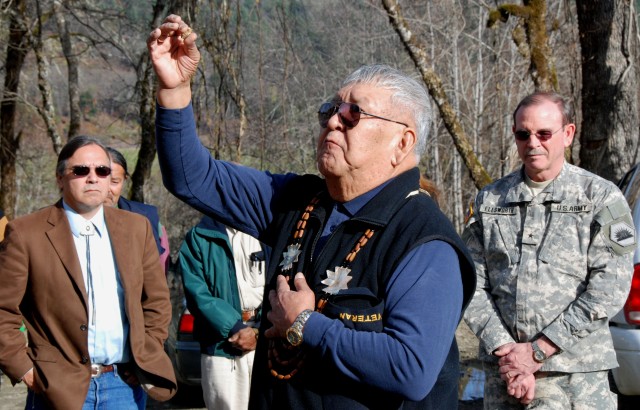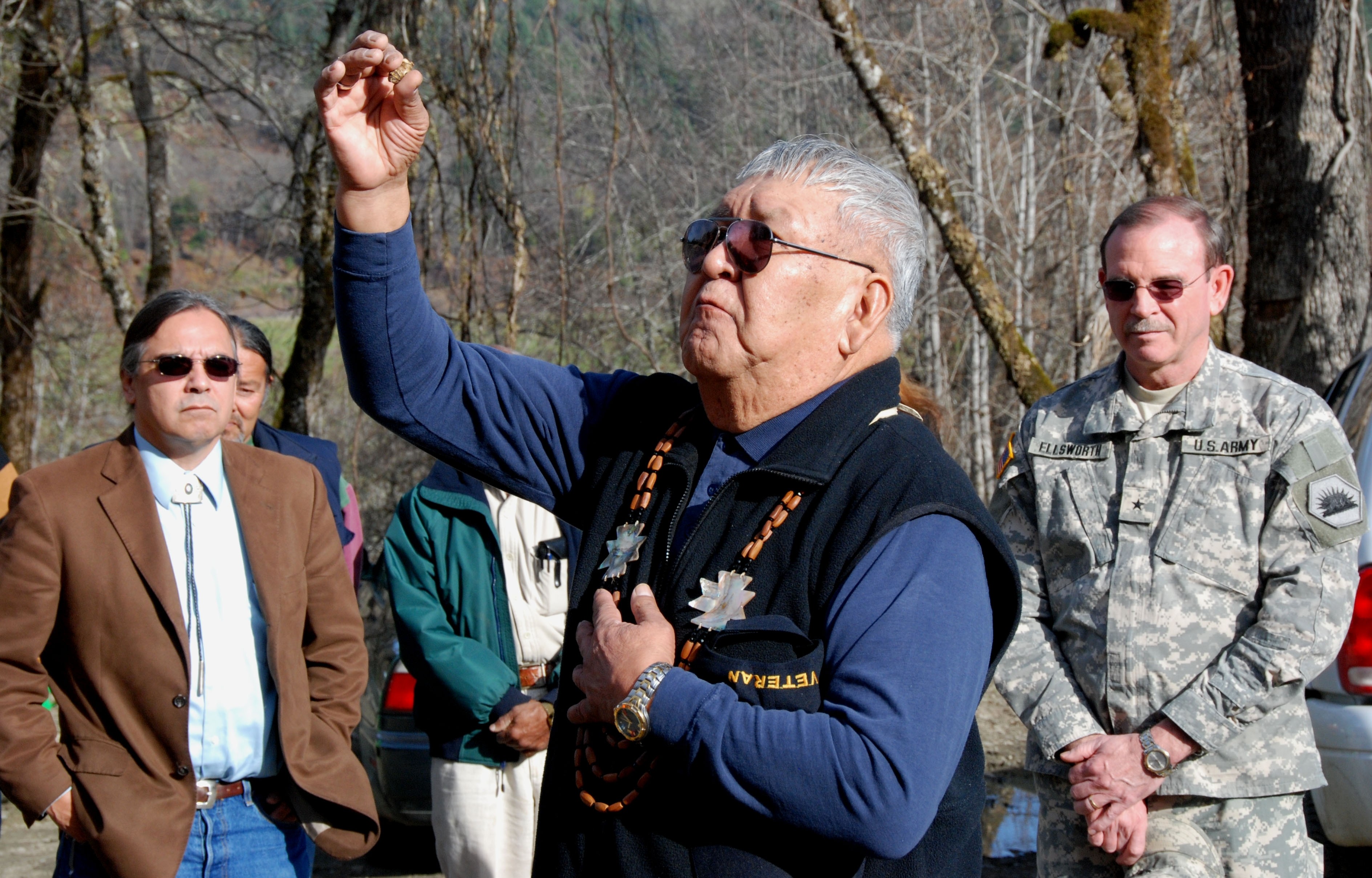McKINLEYVILLE, Calif. (Army News Service, Feb. 8, 2008) - National Guard troops joined members of the Hoopa Indian Reservation to work on an engineering project designed to stabilize a hill and remove dirt from a major landslide in northern California.
The project, "Operation Winter Eagle," began in October and produced major results before concluding in early December, officials said. Soldiers and Airmen from the California and Indiana National Guard worked on the project.
"We got done above and beyond what we planned on getting done this year," said Hoopa civil engineer Cody Smith. "Our estimate right now is that with your guys' help, we removed a total of 40,000 cubic yards off that slide face - 30,000 of it with these machines right here which your guys were running."
The numbers well exceeded the tribe's original goal for the year of about 18,000 cubic yards.
The project is one of many conducted by the California Civil-Military Innovative Readiness Training team. About 20 Soldiers and four individuals from the Hoopa Roads Department worked alongside one another to stabilize a hillside which had given way in August 2003, blocking residents and denying emergency personnel from traveling a critical passage way.
Although the Hoopa tribe conducted mitigation measures, the affected area increased 300 percent and magnified the tribe's need for assistance. Former Innovative Readiness Team commander, Maj. Ken Shedarowich, had built a strong relationship with the Hoopa community while his troops provided medical and dental services for tribal members. Upon learning of the Bald Hill Slide situation, he asked how the California National Guard could assist.
On Dec. 11, Brig. Gen. Kevin G. Ellsworth, director, Joint Staff, visited the Hoopa Indian Reservation to view the work of the IRT and Hoopa Roads Department. At the site of the slide, the visit began with a moving prayer offered in the native tongue by the tribe's resident elder and sergeant-at-arms, Billy Carpenter. Carpenter also happened to be a veteran of the Korean War and was glad to have the Army there with the tribe.
"We are all one. We're not different from one another," said Carpenter as he began. "Usually when we call on the creator ... the rest of the day is a good one."
As Brig. Gen. Ellsworth surveyed the slide, he spoke on behalf of the engineers. "It's been great training, and it's always a pleasure," he said. "Relationships are good, and it helps keep our folks tuned up. We've got great engineers. We know they're working hard when they're dirty. I'm an engineer officer so I can speak for you guys."
When the comment "check your boots, sir," came from a brave Soldier in the rear, the general laughed as he looked at his own clean ones and replied, "that was a few years ago."
Tribal Roads Department Director Jacque Hostler said several agencies and Rep. Mike Thompson of California have supported the project. The tribe continues to lobby for more federal money to fix the road permanently, which could require moving another 100,000 cubic yards of material. Although the project is not expected to be complete until 2010, Hostler praised the Guard for their help and said they could at least see a light at the end of the tunnel.
"Having you all here is a lifelong dream to see the art of accomplishing with us hand-in-hand the mitigation of Bald Hill Slide," she said. "It's not a small matter that the Guard came at the final


Social Sharing